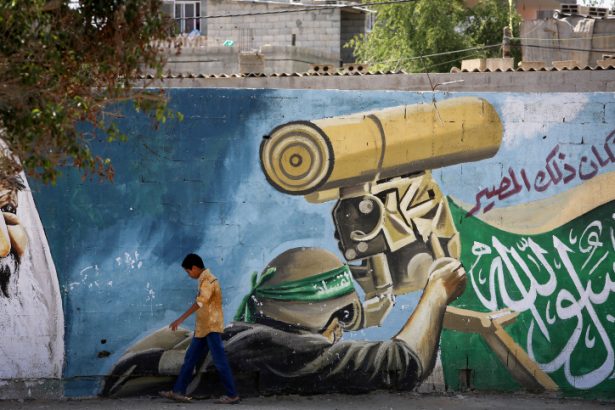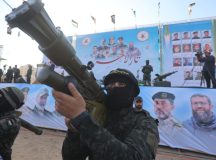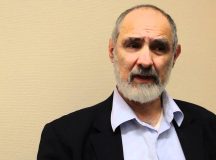Richard Landes is a medievalist and historian of apocalyptic movements. He is author of Heaven on Earth: The Varieties of the Millennial Experience and Can ‘The Whole World’ Be Wrong?: Lethal Journalism, Antisemitism, and Global Jihad.
The last hour would not come unless the Muslims will fight against the Jews and the Muslims would kill them until the Jews would hide themselves behind a stone or a tree and a stone or a tree would say: Muslim, or the servant of Allah, there is a Jew behind me; come and kill him; but the tree Gharqad would not say, for it is the tree of the Jews.
Hamas charter, ¶7
Hamas has a consistent record of openly genocidal statements against Israel stretching back now three generations. This genocidal discourse belongs to a distinct category of millennial movements: active cataclysmic apocalyptic. The ‘true believers’ consider themselves the (divine) agents of the massive destruction that clears the way for the coming of ‘heaven on earth’: Destroying the world to save it. This genocidal discourse is found in other such movements that focus on an arch-enemy (Antichrist, Dajjal), with its attendant violent paranoia, scapegoating, projection, and cult of death.
The greatest overlap of millennial details appears when comparing the apocalyptic narratives of Hamas in the 2020s and the Nazis in the 1930s.
– Both seek world conquest and the subjection of the ‘other’ – for Nazis non-Aryans, for Jihadis, infidels.
– Both view the apocalyptic scenario leading to collective redemption as calling for cataclysmic destruction and consider themselves the agents of that destruction.
– Both target the Jews as especially dangerous enemies of their project who must be exterminated in order for it to reach fulfillment.
– Both project onto the Jews their own unavowable desires and accuse them of world conquest and genocide.
– Both embrace a cult of death which, if empowered, can bring about megadeath on the scale of tens and hundreds of millions.
Aside from the observation that one was allegedly anti-religious and racist, and the other is zealously religious and theocratic, the movements are remarkably similar.
Herf and Goda make a key historical point about the comparison.
As it happens, there is an interesting and challenging connection between the current Gaza war and Nazi Germany … It concerns the relationship between a terrorist dictatorship and the population over which it rules. Historians have long debated why Germans fought to the bitter end of the war, why the army never overthrew Hitler, and why there was no popular revolt against the Nazi regime. The famous term Volksgemeinschaft or ‘people’s community’ captures the mixture of terror on one hand and popular consensus on the other that allowed Hitler’s regime to survive. The relationship between the Hamas dictatorship and ordinary Gazans raises similar questions. After 17 years of Jew-hatred preached from Gaza’s mosques, taught in its schools, and beamed into its television sets, is it any wonder that so many civilians in Gaza seem to support Hamas?
Note the electric enthusiasm that Hamas’ deeds inspired in some in the West. What comparisons can one make between Hitler’s mesmerising power to enthuse the German Volk, and the kind of excitement Hamas’ savage assault inspired. Professor at Cornell University and Black Lives Matter spokesman, Russell Rickford, exclaimed at a rally supporting the Palestinians: ‘It was exhilarating! It was exhilarating! It was energising! I was exhilarated!’ And that exhilaration comes from his identifying his ‘revolutionary’ desire to ‘challenge the monopoly on violence’ with Jihadi savagery.
Could there not be a potential path here whereby this kind of excited sympathy for people rejoicing in their slaughter of human beings, might lead to the kinds of mass enthusiasms the Nazis so ably choreographed? In a controversial article published in the NYT on November 10, 2023, Omer Bartov found such a line of inquiry both incorrect and racist. Along with fellow ‘holocaust scholars,’ he rejected the very suggestion.
Israeli leaders and others are using the Holocaust framing to portray Israel’s collective punishment of Gaza as a battle for civilization in the face of barbarism, thereby promoting racist narratives about Palestinians.
This is post-colonial rhetoric at its most threadbare. The perspective he formulates in the least attractive way possible, has nothing to do with real racism since all the players involved embody not race but ideological and cultural phenomena. Calling it by the inflated term ‘racist’ impoverishes the historical debate and crams our vision into 75-year old struggle for Palestinian rights, not an 85-year old marriage of Nazi and Palestinian Muslim eliminationist antisemitism. If such accusations were carry weight (and apparently they do), it would forbid us from discussing the role of Hamas since 1988 in carrying the millennial aspiration of that hadith into an active apocalyptic phase, where the first order of business is to kill a Jew, and barring that, get a Jew to kill a Palestinian.
In what historical seminar studying movements such as these, say, of the Annales school of mentalités, would someone analyse a case where two such unusually dangerous movements appear two generations apart, and share such striking similarities, without discussing the many connections and parallels? Who would begin an historical reconstruction of the later movement in the three years after the defeat of their predecessors and allies in 1945, and begin with (their own failure to commit genocide in) 1948 when Israel ‘deprived Palestinians of their rights,’ rather than the late 1930s, when Jihadis and Nazis first joined forces? What historian of mentalités would discuss the rise of multiple, genocidal Jihadi cults in the Muslim world in the subsequent generations, without examining their relationship to the double genocidal failures of the 1940s? Not any seminar I or Omer attended back in the early 1970s, the years before Orientalism took over.
If ‘civilisation’ arises from the organisational treasuring of life, then is this conflict not a civilisational battle with a death cult, which even Muslims find alarming? And is that cult not showing alarming strength? There are historical cases when an active cataclysmic apocalyptic movement ‘took’ inside a given civilisation. And none have happy endings.
And just as it is appropriate to see the two world wars of the 20th century as one ‘thirty-year’s war’ with a brief respite, how much the more likely, in the perspective of an historian, is it to see this battle over the land twixt river and sea as the only, still active, battle front of World War II? Or, worse, the opening of the next round of a global struggle with totalitarian cults of hatred and death that is, apparently, far from over.
Back in the 1990s, when people began to warn about Caliphators (Jihadis, Islamists), about a religious war brewing between the agnostic West and the zealous Middle East, most of us who heard that these true believers were fighting to take over the world and create a global Caliphate, dismissed it as ludicrous fantasy, or, especially after 9-11, dangerous ‘Islamophobia.’ And the only way a millennial historian could respond to that incredulity was to point out that in millennial movements, wrong does not mean inconsequential. Look at the damage done by twelve years of the Tausendjährige Reich.
Now, a generation later the landscape looks more menacing. While we slept…
One of the key moments in the history of all movements that, as millennial analyst Henri Desroche put it, ‘take’ like a forest fire, is the moment they show their real face in public. In most cases, the public gaze repels them and their radical, impossible ideas, sometimes violently. But in the rare and famous cases where ‘going public’ sparks excitement and enthusiasm, the movement gains public authority and a path to taking and exploiting power.
7/10 was the day of revelation. Faced with the savagery of their brethren, the civil-society, human rights Palestinian community cheered. And they were joined by people who, in principle, supported them according to their progressive claims. What is the meaning of these demonstrations on our campuses and around the country. These celebrations of savage sadism, with their attendant cries of ‘revolution’ and accusations of ‘genocide,’ bode ill for the liberal societies in which they appear. They hail a death cult. Why on earth would progressives jump for joy?




































